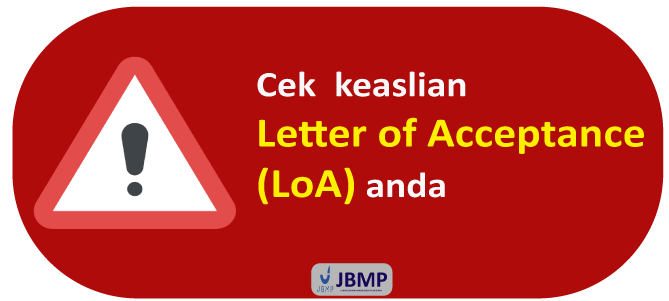Segmentasi Wisatawan Asing Sulawesi Utara: Analisis pada Faktor Demografis dan lifestyle Typology
 ), Deitje A. Katuuk(2), Viktory N.J. Rotty(3), Jeffry S.J. Lengkong(4),
), Deitje A. Katuuk(2), Viktory N.J. Rotty(3), Jeffry S.J. Lengkong(4), (1) Manajemen Pendidikan, Universitas Negeri Manado
(2) Manajemen Pendidikan, Universitas Negeri Manado
(3) Manajemen Pendidikan, Universitas Negeri Manado
(4) Manajemen Pendidikan, Universitas Negeri Manado
 Corresponding Author
Corresponding Author
DOI : https://doi.org/10.24036/jbmp.v10i1.112130
Full Text:
 Language : id
Language : id
Abstract
Segmentasi adalah alat yang penting dan berguna dalam merancang strategi yang berkualitas. Penelitian ini mempelajari perbedaan gaya hidup wisatawan yang mempengaruhi keputusan dalam memilih destinasi liburan. Segmentasi psikografis yang digunakan adalah aktivitas, minat, dan opini untuk mengukur gaya hidup psikografis wisatawan asing yang berkunjung ke Manado Sulawesi Utara. Analisis cluster menemukan empat cluster wisatawan asing, yaitu: Like-everything tourist, Future optimistic Adventurer, Food lover adventurer, Socializer adventurers. Penelitian ini menggunakan teknik convenience purposive sampling. Uji chi-square dilakukan untuk membandingkan empat cluster wisatawan asing berdasarkan profil demografis. Hasil penelitian menunjukkan bahwa tidak ada perbedaan yang signifikan antara keempat cluster dalam hal jenis kelamin, usia, status pekerjaan, dan jumlah perjalanan ke Manado, Sulawesi Utara. Semua cluster didominasi oleh laki-laki, umur 25-35 tahun, bekerja, sekali jalan-jalan ke Manado, Sulawesi Utara. Hasil penelitian menunjukkan perbedaan signifikan yang ditemukan antara keempat cluster dalam hal ras, tujuan perjalanan, pendamping perjalanan, dan pengaturan perjalanan.
Keywords
References
Akinboade, O. A., & Braimoh, L. A. (2010). International tourism and economic development in South Africa: A granger causality test. International Journal of Tourism Research, 12(2), 149–163. https://doi.org/10.1002/jtr.743
Arslanturk, Y., Balcilar, M., & Ozdemir, Z. A. (2011). Time-varying linkages between tourism receipts and economic growth in a small open economy. Economic Modelling, 28(1–2), 664–671. https://doi.org/10.1016/j.econmod.2010.06.003
Brida, J. G., Cortes-Jimenez, I., & Pulina, M. (2016). Has the tourism-led growth hypothesis been validated? A literature review. In Current Issues in Tourism (Vol. 19, Issue 5, pp. 394–430). Routledge. https://doi.org/10.1080/13683500.2013.868414
Cohen, S. A., Prayag, G., & Moital, M. (2014). Consumer behaviour in tourism: Concepts, influences and opportunities. In Current Issues in Tourism (Vol. 17, Issue 10, pp. 872–909). Routledge. https://doi.org/10.1080/13683500.2013.850064
Dixit, S. K., Lee, K.-H., & Loo, P. T. (2019). Consumer behavior in hospitality and tourism. Journal of Global Scholars of Marketing Science, 29(2), 151–161. https://doi.org/10.1080/21639159.2019.1577159
Durbarry, R. (2002). The Economic Contribution of Tourism in Mauritius. Annals of Tourism Research, 29(3), 862–865. https://doi.org/10.1016/s0160-7383(02)00008-7
Enright, M. J., & Newton, J. (2004). Tourism destination competitiveness: A quantitative approach. Tourism Management, 25(6), 777–788. https://doi.org/10.1016/j.tourman.2004.06.008
Enrique Bigné, J., Aldás-Manzano, J., Küster, I., & Vila, N. (2002). The concept mapping approach in marketing: An application in the travel agencies sector. Qualitative Market Research: An International Journal, 5(2), 87–95. https://doi.org/10.1108/13522750210423724
Ghosh, S. (2011). Examining tourism-led growth hypothesis for India. International Journal of Indian Culture and Business Management, 4(3), 347. https://doi.org/10.1504/ijicbm.2011.040169
Gwenhure, Y., & Odhiambo, N. M. (2017). Tourism and economic growth: A review of international literature. In Tourism (Vol. 65, Issue 1, pp. 33–44). Institute for Tourism.
Hays, W. L. (1983). Review of Using Multivariate Statistics. Contemporary Psychology: A Journal of Reviews, 28(8), 642–642. https://doi.org/10.1037/022267
Kountur, R. (2011). The Ethical Issue of Response Bias in Survey Data Collection and Its Solution. 14(2), 55–60. https://www.mendeley.com/catalogue/5e52d612-9668-340d-985f-8ea9722e63a8/
Lapko, A., Panasiuk, A., Strulak-Wójcikiewicz, R., & Landowski, M. (2020). The state of air pollution as a factor determining the assessment of a city’s tourist attractiveness-based on the opinions of polish respondents. Sustainability (Switzerland), 12(4), 1–21. https://doi.org/10.3390/su12041466
Ma, M., & Hassink, R. (2013). An evolutionary perspective on tourism area development. Annals of Tourism Research, 41, 89–109. https://doi.org/10.1016/j.annals.2012.12.004
Mbaiwa, J. E. (2005). Enclave tourism and its socio-economic impacts in the Okavango Delta, Botswana. Tourism Management, 26(2), 157–172. https://doi.org/10.1016/j.tourman.2003.11.005
Mbaiwa, J. E. (2011). Changes on traditional livelihood activities and lifestyles caused by tourism development in the Okavango Delta, Botswana. Tourism Management, 32(5), 1050–1060. https://doi.org/10.1016/j.tourman.2010.09.002
Moutinho, L. (1987). Consumer Behaviour in Tourism. European Journal of Marketing, 21(10), 5–44. https://doi.org/10.1108/EUM0000000004718
Principles of marketing. (1995). Long Range Planning, 28(1), 124. https://doi.org/10.1016/0024-6301(95)92103-6
Kementerian Pariwisata Republik Indonesia. Rencana Strategis Sekretariat Kementerian Pariwisata. (2015).
Rust, R. T., & Oliver, R. L. (2000). Should we delight the customer? Journal of the Academy of Marketing Science, 28(1), 86–94. https://doi.org/10.1177/0092070300281008
Salazar, N. B. (2012). Tourism Imaginaries: A Conceptual Approach. Annals of Tourism Research, 39(2), 863–882. https://doi.org/10.1016/j.annals.2011.10.004
Santoso, S., & Tjiptono, F. (2001). Riset Pemasaran : Konsep dan Aplikasi dengan SPSS. Elex Media Komputindo.
Schul, P., & Crompton, J. L. (1983). Search behavior of international vacationers: travel-specific lifestyle and sociodemographic variables. Journal of Travel Research, 22(2), 25–30. https://doi.org/10.1177/004728758302200206
Srihadi, T. F., Hartoyo, Sukandar, D., & Soehadi, A. W. (2016). Segmentation of the tourism market for Jakarta: Classification of foreign visitors’ lifestyle typologies. Tourism Management Perspectives, 19, 32–39. https://doi.org/10.1016/j.tmp.2016.03.005
T.Rochelle. (2017). Travel & Tourism Economic Impact 2017. World Travel & Tourism Council, 1–24. https://www.wttc.org/-/media/files/reports/economic-impact-research/countries-2017/china2017.pdf
Tang, C. F., & Tan, E. C. (2015). Does tourism effectively stimulate Malaysia’s economic growth? Tourism Management, 46, 158–163. https://doi.org/10.1016/j.tourman.2014.06.020
Tugcu, C. T. (2014). Tourism and economic growth nexus revisited: A panel causality analysis for the case of the Mediterranean Region. Tourism Management, 42, 207–212. https://doi.org/10.1016/j.tourman.2013.12.007
 Article Metrics
Article Metrics
 Abstract Views : 499 times
Abstract Views : 499 times
 PDF Downloaded : 192 times
PDF Downloaded : 192 times
Refbacks
- There are currently no refbacks.




